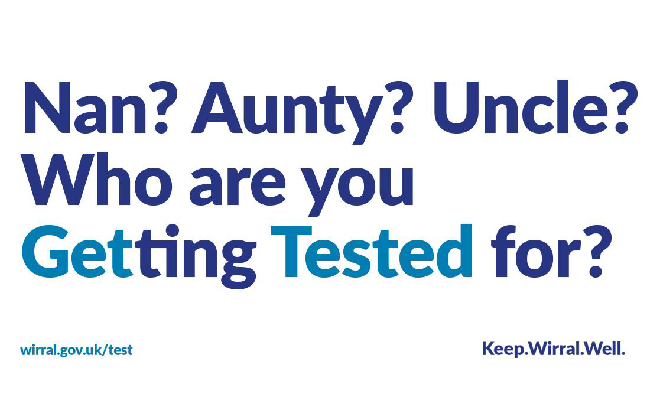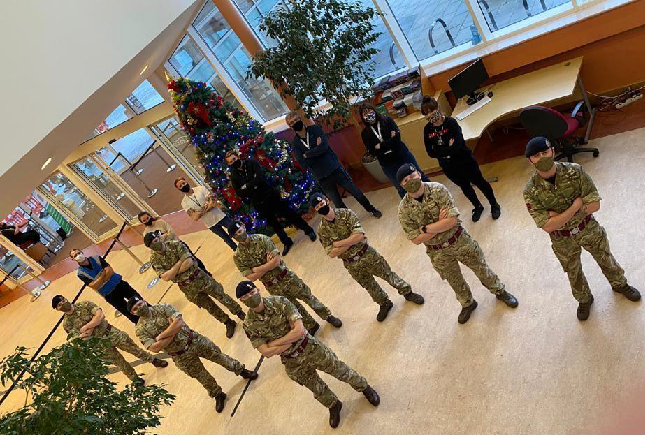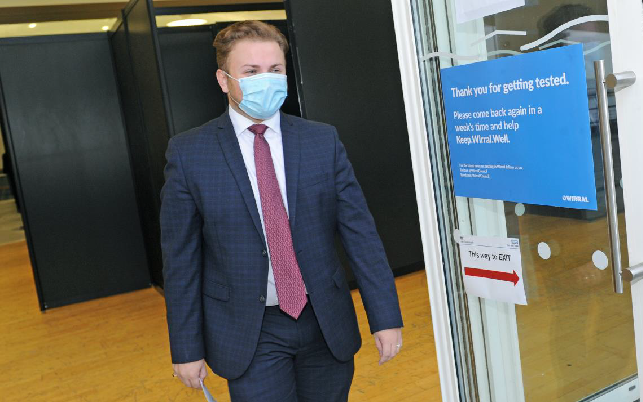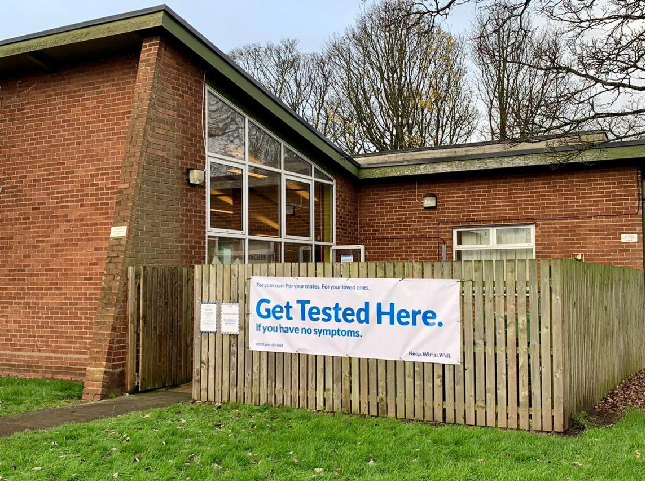Wirral’s Community Testing case study provides an overview of the significant local achievement to mobilise four Community Testing sites within a week, helping to reduce the transmission of COVID-19 within the Borough.
This is part of a series of case-studies published on 15 January 2021.
- Our local approach to Community Testing is supported by a strong community engagement approach to ensure our local communities play important and active roles in the prevention and control of COVID-19.
The challenge
In Wirral we now have enough local capacity for anyone with symptoms who needs a test to access testing in a timely manner. However, we know that up to a third of individuals who test positive for coronavirus have no symptoms and would not otherwise come forward for a test.
Community Testing can help identify people who are infected and potentially infectious but without symptoms and therefore unaware that they might be spreading the disease.
On Friday 4 December Wirral, along with other Liverpool City Region Authorities, received confirmation from central government that we had received funding to develop Community Testing using Lateral Flow Testing. The national offer included the support of the Ministry of Defence (MOD) but only for the period of the 7-11 December (when they needed to be redeployed to support other areas). We set ourselves the ambitious target to get 4 Community Testing sites up and running by Monday 7 December. From 7-11 December the sites were to be run in partnership with the MOD with Army personnel, before being handed over for local delivery on 12 December.
Military personnel handed over to Council teams during a 5-day transition period.
The solution
A task and finish group including representatives from Public Health, Local Testing Lead, HR, Finance, Communications, Programme Management, and Intelligence was established. There were a number of crucial elements to ensure we succeeded within this incredibly tight timeline, including:
- Aligning the pilot to Wirral’s strategic plan
- Agreeing suitable testing site locations
- Developing standard operating procedures and processes
- Recruiting and training over 150 staff in a week
- Establishing staffing rotas and ensuring sufficient resources available at each site
- Ensuring activities were planned and managed in a safe way, through robust risk assessments
- Establishing reporting requirements and governance arrangements
- Establishing a storage and distribution centre for testing equipment
- Launching our community engagement and communications strategy
- Agreeing pathways to support the ‘Test, Trace and Contain’ approach
- Carrying out a thorough handover and transition from the Military
- Building in an evaluation mechanism
Officers from across the Council worked tirelessly around the clock, alongside Military personnel, to ensure the sites and staff were ready to receive the public at the four locations: The Floral Pavilion, Greasby Library, Eastham Library and Birkenhead Market.
Mobilising Community Testing has created employment opportunities for local people. Wirral HR team worked at pace to recruit new staff, whilst redeploying or offering additional working hours for existing staff. The Council has ensured that our new starters will also receive their first pay period in advance of Christmas.
Our Testing Staff have been effectively trained to ensure a smooth hand over from the MOD to Wirral Council, and have been successfully operating since the military departure.
Any resident of Wirral can now be tested, no booking is required, and they receive their result rapidly (usually within the hour).
Despite being granted the opportunity on Friday 4 December, the communications team were embargoed and therefore unable to promote Community Testing until Monday 7 December. At 7am on Monday morning we launched a local robust Communications Plan’– creating awareness of the programme on various platforms including news releases, daily social media posts, features on BBC Radio Merseyside and it was also distributed to the Wirral View subscription list which consists of 100,000 Wirral residents.
Our local community groups such as ‘Tomorrow’s Women Wirral’ visited and filmed the Birkenhead site, portraying the fantastic support within the community and with our partners. Thanks to this incredibly proactive and informative engagement, by 10:30am on 7 December, just three and a half hours since our communications launched, there were pictures uploaded on to social media displaying residents socially distanced queuing, ready to be tested, which is remarkable given the lack of advance communications.
We are using the sites as a way of engaging our community in supporting preventative measures and Keeping Wirral Well. Our Community Connectors have been collecting qualitative insight to understand why people are attending for a test – the overwhelming feedback being that people are coming to play their part to Keep Wirral Well. This insight also enables us to challenge any misconceptions that exist about the meaning of a negative test result.
The impact
Thanks to this team effort we successfully opened four Community Testing sites on 7 December, ahead of other local authorities in the region. The sites were successfully handed over from the MOD to Wirral Council on 11 December.
The response from Wirral residents has been fantastic to date. In the first ten days, we carried out 14,992 tests with residents who were not experiencing symptoms and of those, 83 individuals tested positive.
The impact that the communication launch post had – ‘Let’s Stop Covid in its Tracks’ was phenomenal, on 7 December 77,000 people on Facebook knew Wirral’s Community Testing had commenced.
How is the new approach being sustained
The programme is set to operate until at least the end of March 2021. We have proposed a formalised system that will collate intelligence and insight, so we can continuously review and tailor our approach to meet community needs. Wirral is also continuing to work closely with LCR, Cheshire & Merseyside and national partners to ensure we remain at the forefront of any learning and development opportunities.
Continued community engagement is critical to sustain this model. We plan to build upon the already successful community engagement campaign, by working with a range of stakeholders and connections we have developed throughout the year, to discover how we can do more to connect with the hard-to-reach groups.
Community testing is one key part of the Find, Test, Trace, Isolate, Support model. Each component of this model is essential to sustainably limit transmission of COVID-19 alongside the daily efforts of everyone to maintain physical distance from others, wash our hands regularly and wear a face covering, until vaccines are rolled out and beyond.
This approach alongside other testing options, and as part of the delivery of Wirral Outbreak Prevention and Control Plan will be key to ensuring we supress transmission of COVID-19 in the Borough.
Quote from Councillor Janette Williamson
“Wirral has done so well to reduce the spread of COVID-19 over the last few months and no-one wants to see our numbers creep back up again over Christmas and into the New Year. By being able to offer large scale symptom-free testing to our entire population we will hopefully be able to keep the rate of infection down, prevent more people from becoming unwell, protect our most vulnerable and stop our health services from being overwhelmed."
Lessons learned
Learning from Liverpool City Region’s pilot of ‘Community Testing’, it was clear that where you position the sites is the key to their success. Therefore, we will analyse the data from our pop-up sites and relocate them should we feel it would be more beneficial in another area. They must be accessible and visible to all members of our community and therefore provide a broader preventative measure to supress the transmission of COVID-19.
Contact
Keira Walsh, Wirral Borough Council
[email protected]





